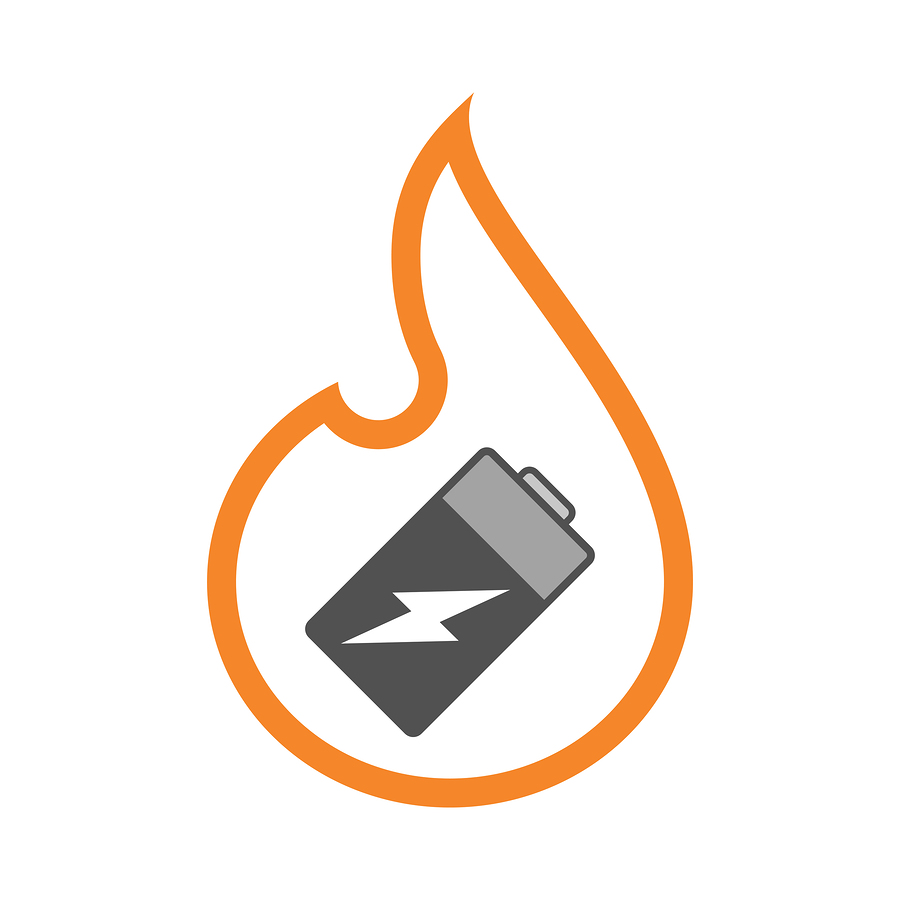
Robohub.org
Battery safety and fire handling

Lithium battery safety is an important issue as there are more and more reports of fires and explosions. Fires have been reported in everything from cell phones to airplanes to robots.
If you don’t know why we need to discuss this, or even if you do know, watch this clip or click here.
I am not a fire expert. This post is based on things I have heard and some basic research. Contact your local fire department for advice specific to your situation. I had very little success contacting my local fire department about this, hopefully you will have more luck.
Preventing Problems
1. Use a proper charger for your battery type and voltage. This will help prevent overcharging. In many cases lithium-ion batteries catch fire when the chargers keep dumping charge into the batteries after the maximum voltage has been reached.
2. Use a battery management system (BMS) when building battery packs with multiple cells. A BMS will monitor the voltage of each cell and halt charging when any cell reaches the maximum voltage. Cheap BMS’s will stop all charging when any cell reaches that maximum voltage. Fancier/better BMS’s can individually charge each cell to help keep the battery pack balanced. A balanced pack is good since each cell will be a similar voltage for optimal battery pack performance. The fancy BMS’s can also often detect if a single cell is reading wrong. There have been cases of a BMS’s working properly but a single cell going bad which confuses the BMS; and yields a fire/explosion.
3. Only charge batteries in designated areas. A designated area should be non combustible. For example cement, sand, cinder block and metal boxes are not uncommon to use for charging areas. For smaller cells you can purchase fire containment bags designed to put the charging battery in.

In addition the area where you charge the batteries should have good ventilation.
I have heard that on the Boeing Dreamliner, part of the solve for their batteries catching fire on planes, was to make sure that the metal enclosure that the batteries were in could withstand the heat of a battery fire. And also to make sure that in the event of a fire the fumes would vent outside the aircraft and not into the cabin.

Dreamliner battery pack before and after fire. [SOURCE]
4. Avoid short circuiting the batteries. This can cause a thermal runoff which will also cause a fire/explosion. When I say avoid short circuiting the battery you are probably thinking of just touching the positive and negative leads together. While that is an example you need to think of other methods as well. For example puncturing a cell (such as with a drill bit or a screw driver) or compressing the cells, can cause a short-circuit with a resulting thermal runoff.
5. Don’t leave batteries unattended when charging. This will let people be available in case of a problem. However, as you saw in the video above, you might want to keep a distance from the battery in case there is a catastrophic event with flames shooting out from the battery pack.
6. Store batteries within the specs of the battery. Usually that means room temperature and out of direct sunlight (to avoid overheating).
7. Training of personnel for handling batteries, charging batteries, and what to do in the event of a fire. Having people trained in what to do can be important so that they stay safe. For example, without training people might not realize how bad the fumes are. Also make sure people know where the fire pull stations are and where the extinguishers are.
Handling Fires
1. There are 2 primary issues with a lithium fire. The fire itself and the gases released. This means that even if you think you can safely extinguish the fire, you need to keep in mind the fumes and possibly clear away from the fire.
2a. Lithium batteries which are usually in the form of small non-rechargeable batteries (such as in a watch) in theory require a class D fire extinguisher. However most people do not have one available. As such, for the most part you need to just let it burn itself out (it is good that the batteries are usually small). You can use a standard class ABC fire extinguisher to prevent the spread of the fire. Avoid using water on the lithium battery itself since the lithium and water can react violently.
2b. Lithium-ion batteries (including LiFePO4) that are used on many robots, are often larger and rechargeable. For these batteries there is not a lot of actual lithium metal in the battery, so you can use water or a class ABC fire extinguisher. You do not use a class D extinguisher with these batteries.
With both of these types of fires, there is a good chance that you will not be able to extinguish the it. If you can safety be in the area your primary goal is to allow the battery to burn in a controlled and safe manner. If possible try to get the battery outside and on a surface that is not combustible. As a reminder lithium-ion fires are very hot and flames can shoot out from various places unexpectedly; you need to be careful and only do what you can do safety. If you have a battery with multiple cells it is not uncommon for each cell to catch fire separately. So you might see the flames die down, then shortly after another cell catches fire, and then another; as the cells cascade and catch fire.

A quick reminder about how to use a fire extinguisher. Remember first you Pull the pin, then you Aim at the base of the fire, then you Squeeze the handle, followed by Sweeping back and forth at the base of the fire. [SOURCE]
3. In many cases the batteries are in an enclosure where if you spray the robots with an extinguisher you will not even reach the batteries. In this case your priority is your safety (from fire and fumes), followed by preventing the fire from spreading. To prevent the fire from spreading you need to make sure all combustible material is away from the robot. If possible get the battery pack outside.
In firefighting school a common question is: Who is the most important person? To which the response is, me!
4. If charging the battery, try to unplug the battery charger from wall. Again only if you can do this safely.
I hope you found the above useful. I am not an expert on lithium batteries or fire safety. Consult with your local experts and fire authorities. I am writing this post due to the lack of information in the robotics community about battery safety.
As said by Wired “you know what they say: With great power comes great responsibility.”.
Thank you Jeff (I think he said I should call him Merlin) for some help with this topic.
This post appeared first on Robots For Roboticists.




